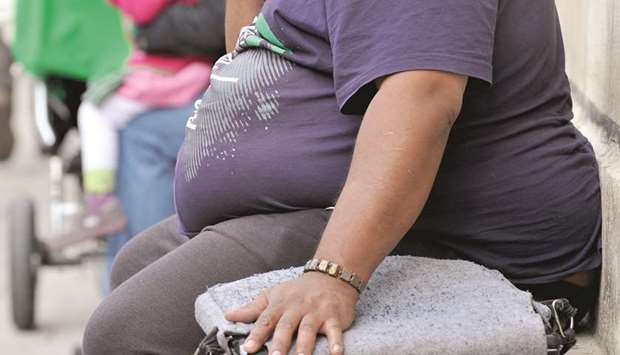In what they describe as “promising” laboratory trials, they said the device had reduced the fat mass of mice on a high-fat diet by more than 30 per cent over four weeks.
The innovative patch contains hundreds of micro-needles, each thinner than a human hair, which are loaded with drugs. It must be pressed against the skin for about two minutes, allowing the needles to embed. It is then removed, leaving the needles to slowly release the drug as they degrade.
While visceral white fat, also called white adipose tissue, is relatively inert and known as a major risk factor for maladies including heart disease, stroke, type-2 diabetes and cancer, brown fat is burned to heat the body in cold conditions.
For quite some time now, researchers have been trying to develop drugs that can either boost the activity of brown fat cells or transform white fat cells into tissue that behaves similarly to brown fat, in order to harness brown fat’s properties for weight loss.
“The current lack of a pharmacological agent [to reduce visceral fat] is a really unsatisfactory situation. We badly need one,” says Dr Alexander Pfeifer, head of the Institute of Pharmacology and Toxicology at Bonn University in Germany. “But the field is in flux, and something will be done.”
Dr Tobias Fromme, chair of the Department of Molecular Nutritional Medicine at the Technical University of Munich, is also confident that a fat-fighting drug will be found. “[The treatment] already works quite well in small mammals,” he notes.
Newborn babies, who can’t shiver to maintain their body temperature, rely on their considerable deposits of brown fat to stay warm. Fromme and his research team recently discovered that adults have about three times more brown fat than previously thought, which he says has reignited the pharmaceutical industry’s interest in pharmacological fat burners.
Scientists have in fact detected numerous chemical messengers in the body that promote the activity of brown fat tissue or the “browning” of white fat tissue.
Among them are catecholamines such as adrenaline and noradrenaline, hormones such as oestrogen, testosterone and progesterone, and also growth factors, points out a review article published recently in the Berlin-based journal Hormone Molecular Biology and Clinical Investigation.
Many of the results achieved to date have been in trials with animals or animal cells. But Dr Marcel Scheideler, who led the team behind the Berlin journal article, recently demonstrated – experimentally, at least – how humans’ white fat cells can be converted into brown ones.
“About 10 per cent of human fat cells are ‘renovated’ each year – that is, replaced by new fat cells,” Scheideler explains. “By converting fat precursor cells, it may be possible to safely recruit brown fat cells from white fat tissue.”
He says patents for regulation of this process using a family of endogenous molecules known as MicroRNA-26 have already been granted in the United States and the European Union.
Administering a fat-fighting drug with a skin patch, such as that developed by scientists from Singapore’s Nanyang Technological University (NTU), allows it to be applied directly to problem areas.
“The amount of drugs we used in the patch is much less than those used in oral medication or an injected dose,” says Xu Chenjie, an assistant professor at NTU. “This lowers the drug ingredient costs, while our slow-release design minimises its side effects.”
So far, however, there is neither a patch nor a pill on the market that can help the body burn excess fat. Research in this field is still in its infancy, according to the report by Scheideler and his team.
People who want to slim down but reject exercising more and/or eating less theoretically have another option: Calorie-burning by brown fat cells can be encouraged by low-temperature therapy.
“At least until we start shivering, our body generates heat when it’s cold solely by activating brown fat,” says Fromme, pointing out that regular exposure to cold is likely to cause a loss of a few pounds over time.
This is hardly a practical solution for most people, though. “In my view, looking for pharmacological agents to combat obesity is promising and, above all, sensible,” remarks Fromme. “If it fails, it will be due to the side effects. The idea itself – tackling these mechanisms – is highly plausible.” – DPA
MECHANISM: While visceral white fat, also called white adipose tissue, is relatively inert and known as a major risk factor for maladies including heart disease, stroke, type-2 diabetes and cancer, brown fat is burned to heat the body in cold conditions.



